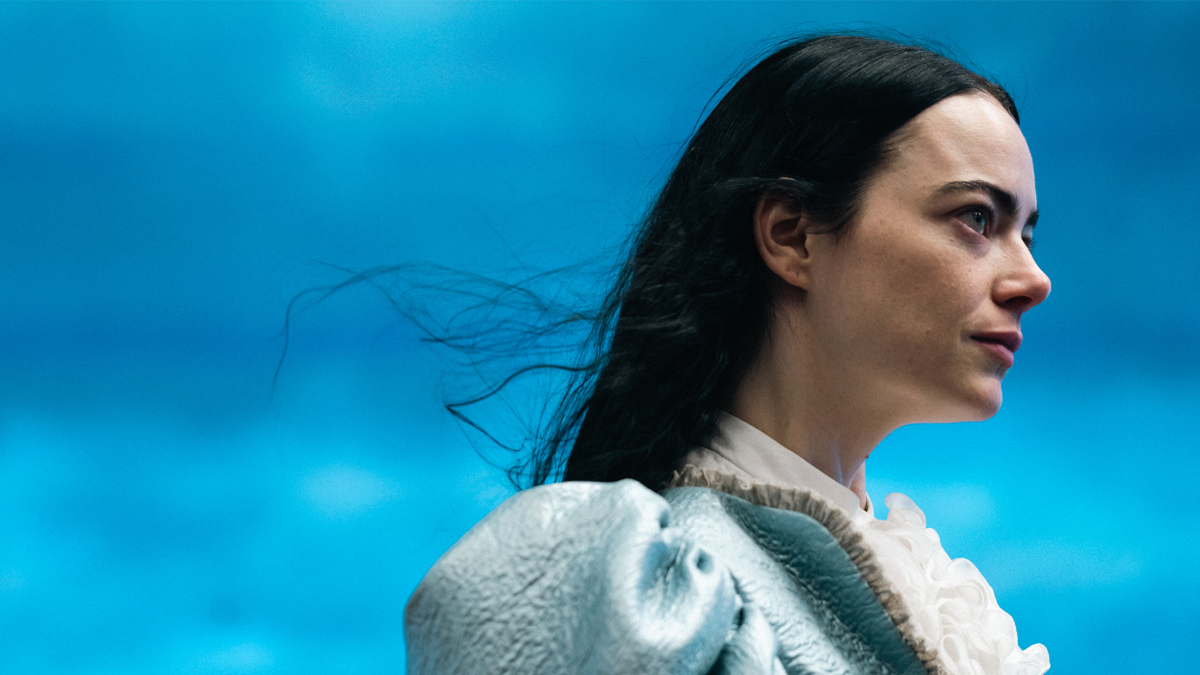Yorgos Lanthimos is a singular talent. His surrealist and highly imaginative films have led to multiple award nominations and wins. His latest film, Poor Things, won the Golden Lion at this year’s Venice Film Festival, and has been nominated for 11 Oscars, including best picture, best director & best actress.
This Thursday, Irish producers Andrew Lowe & Ed Guiney will be at Dublin’s Light House cinema for an extended introduction to the film, for more information & to book tickets visit https://www.lighthousecinema.ie/
The story has shades of Frankenstein and is being referred to as a dystopian coming-of-age tale as a recently deceased young woman, Bella Baxter (Emma Stone), is brought back to life by a brilliant but slightly mad scientist, Dr. Godwin Baxter (Willem Dafoe). Despite Baxter’s attempts to protect Bella from the world, she falls under the sway of Duncan Wedderburn (Mark Ruffalo), a charming but dangerous man. Although it doesn’t initially look like it, Wedderburn is Bella’s key to freedom and independence.
In essence, Bella is a blank slate when she is brought back to life, which Stone found was both challenging and exciting to play with. ‘I was so excited and scared for all the right reasons. Bella doesn’t have any shame or trauma, or even a back story. She’s not raised by a society that is putting these confines on women. That can be incredibly freeing, and there is really no research you can do for something like this. Bella draws things from the men she meets, from the women she meets, from the environment she’s in, and from what she’s eating. She’s like a sponge.’
Mark Ruffalo says the film was unfamiliar territory for him, but he was happy to risk the discomfort to work with Lanthimos. ‘I’m such a big fan of Yorgos that I was nervous about being cast and letting him down…. I’ve also never done an English accent before, and it’s a time period I haven’t worked in either. In the end, my friend told me to always go where the discomfort is as that’s where you’ll grow.’ Lanthimos says he was instantly taken with the book and was inspired by Gray’s accompanying artwork. ‘Alasdair Gray’s novel is immediately something very visually striking and complex – the themes, the humour, and the complexity of its characters and language. I’ve never read anything like it before, I was very taken by it. Gray was a painter, and he’d done illustrations with the text. It was, overall, a story about a woman’s freedom in society. The path was open to tell a story like this.’
The film’s Irish producers, Ed Guiney and Andrew Lowe, are joined by Emma Stone, who took on a producer’s role as well as playing Bella. Guiney says that Stone has excellent storytelling instincts and that her work as a producer was essential to the process. ‘As a producer, she has been incredibly important in how we developed the story and how we’re talking about putting it out into the world.’ Guiney says it was clear that Lanthimos was the perfect director to tackle Gray’s bizarre story. “Yorgos mentioned Gray’s book, which he had long-nurtured a desire to turn into a film and had been in touch with the now-deceased author about it. He was incredibly passionate and connected to the story even at that early stage. I think Alasdair felt that Yorgos really understood his novel and that it was in good hands.”
The story is full of dark humour, violence, and oddness, and Guiney points out that although Lanthimos’s films aren’t technically comedies, they contain comic elements. ‘Yorgos is a great comedy director, even though people wouldn’t describe his films as comedies. He’s one of the few filmmakers that can pivot from outrageous violence to high comedy in the space of a scene.’ Guiney also says the film draws from different mythologies and genres, creating a heady cocktail. ‘Yorgos has built a profile as a one-of-a-kind master filmmaker, and people really want to get behind his vision.’
The film’s cinematographer is Dubliner Robbie Ryan, who was nominated for an Oscar for his work on The Favourite. Ryan says that the Greek director had a very particular aesthetic in mind for Poor Things. “Yorgos wanted to create from whole cloth. Things weren’t meant to feel real or vérité – it’s got its own angle, its own quirk. From my perspective, to light all those worlds was to try and just do it as if it was a normal location.’
Lanthimos set Ryan quite the task: ‘Robbie and I discussed from the beginning that, although we were in a studio, we wanted to film the scenes the same way we would as if we were on location – no lights, flags, and equipment on set
other than the camera. So Robbie had to pre-light everything from outside the windows or studio ceiling rails.’
Article by Cara O’Doherty
POOR THINGS is now showing in Irish cinemas to book tickets to Thursday’s special event visit https://www.lighthousecinema.ie/


